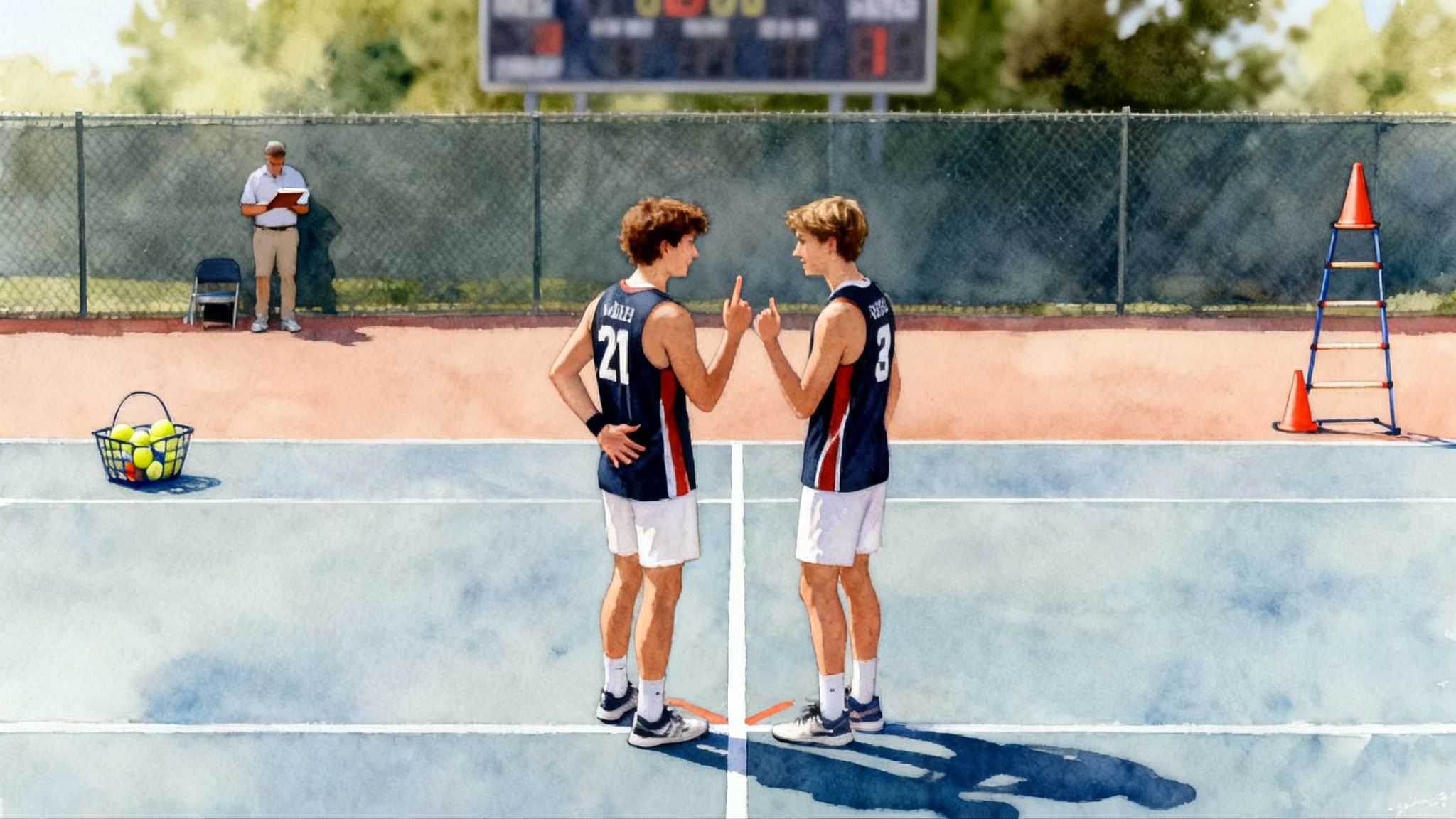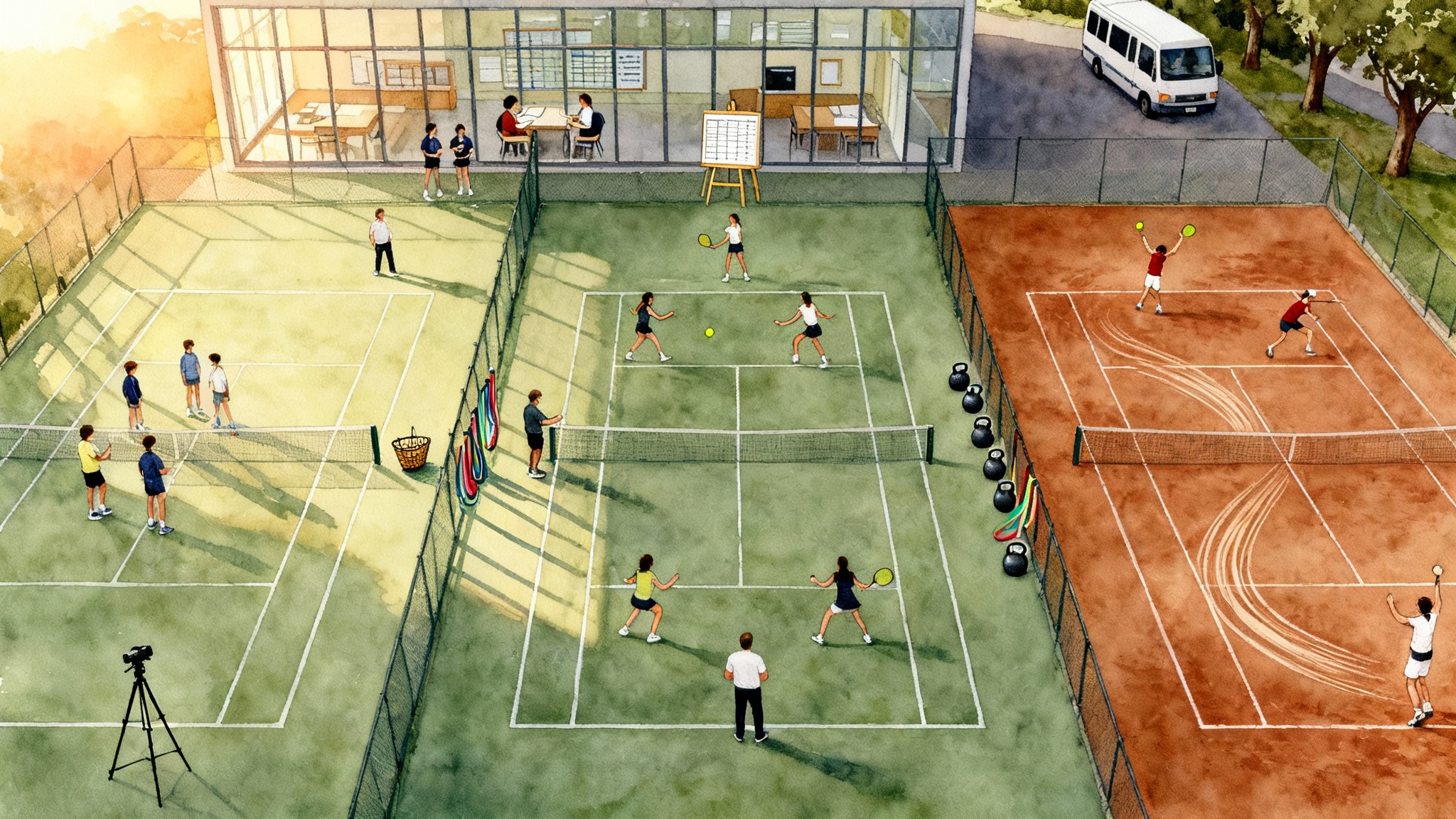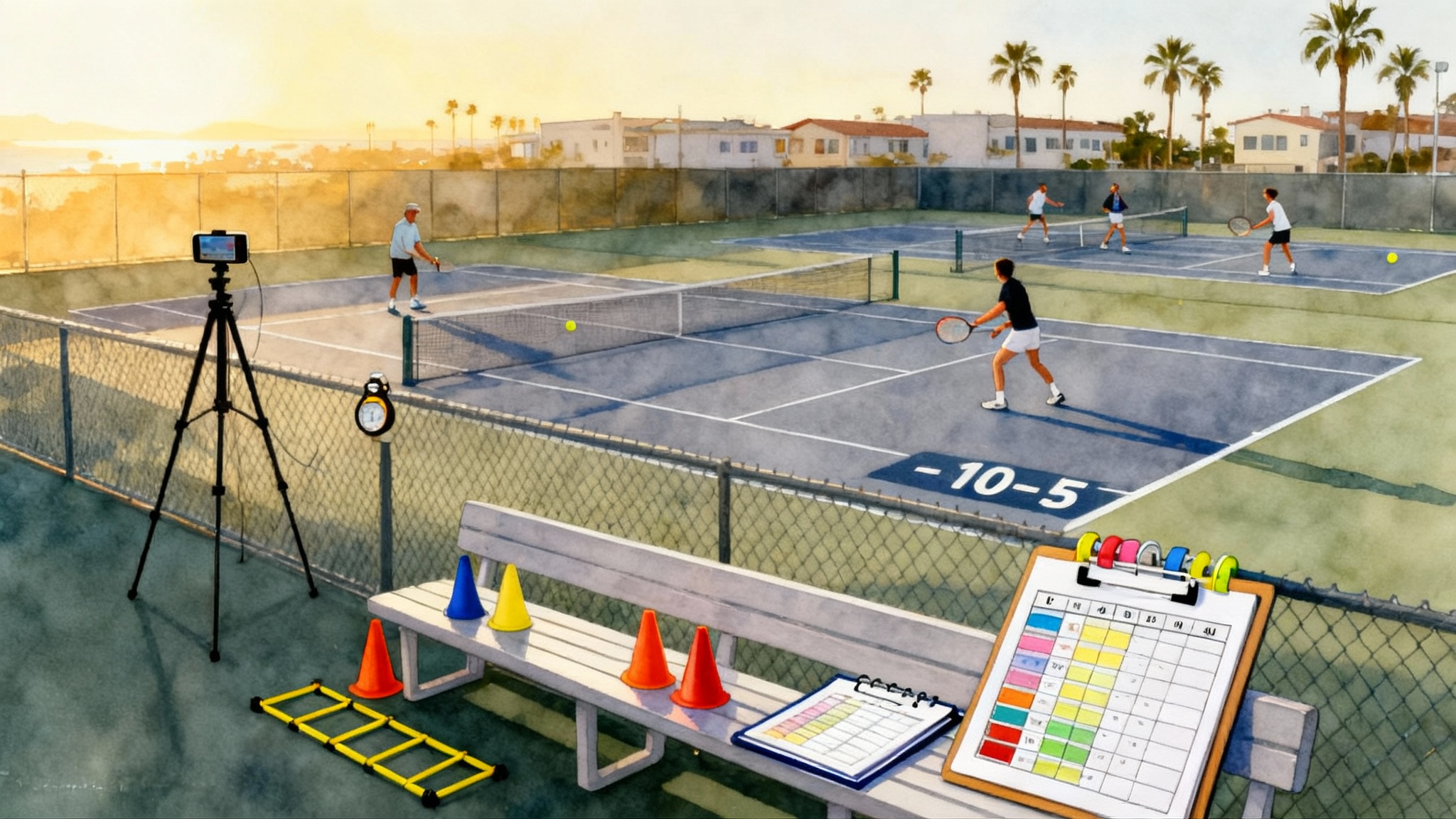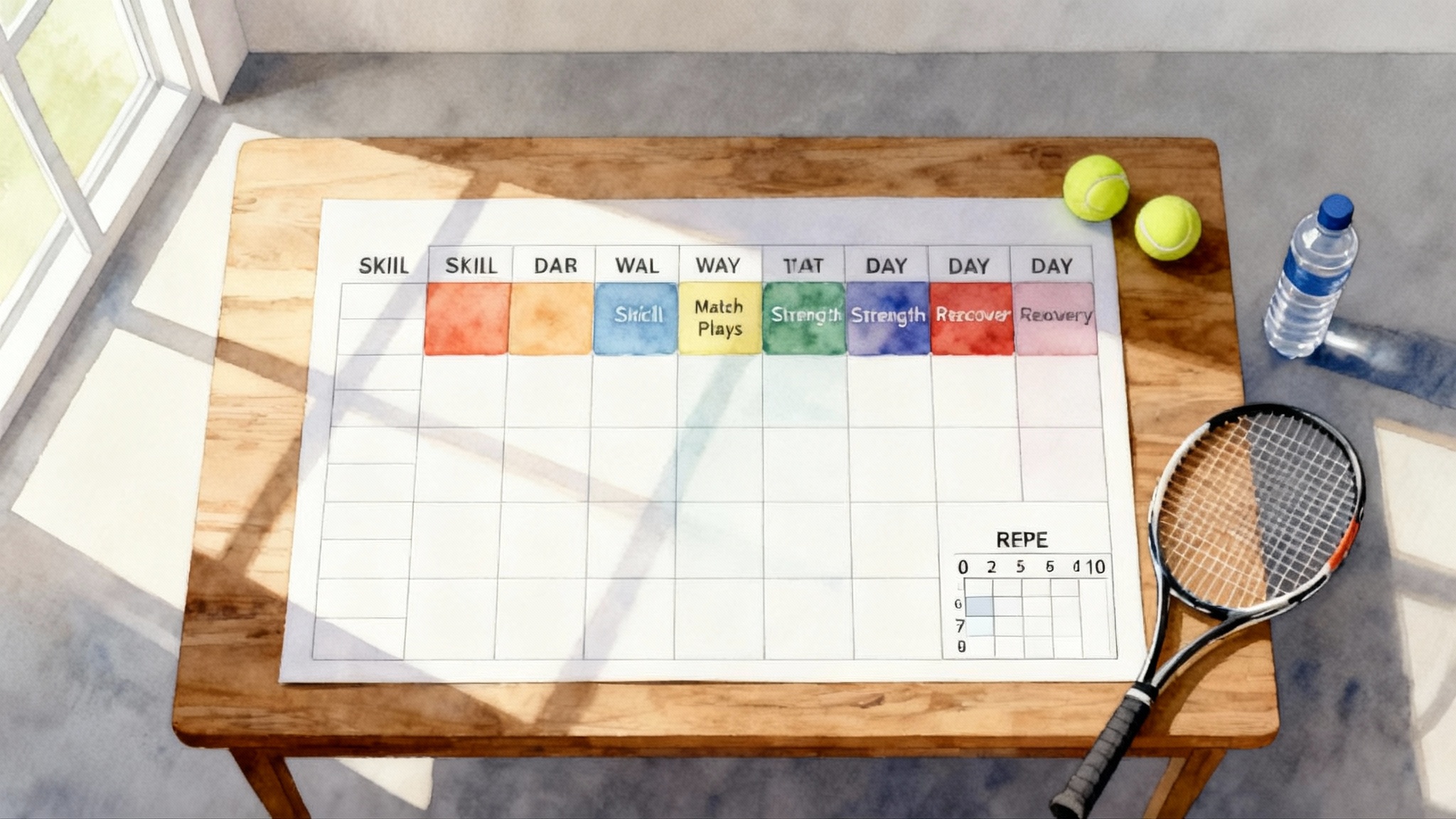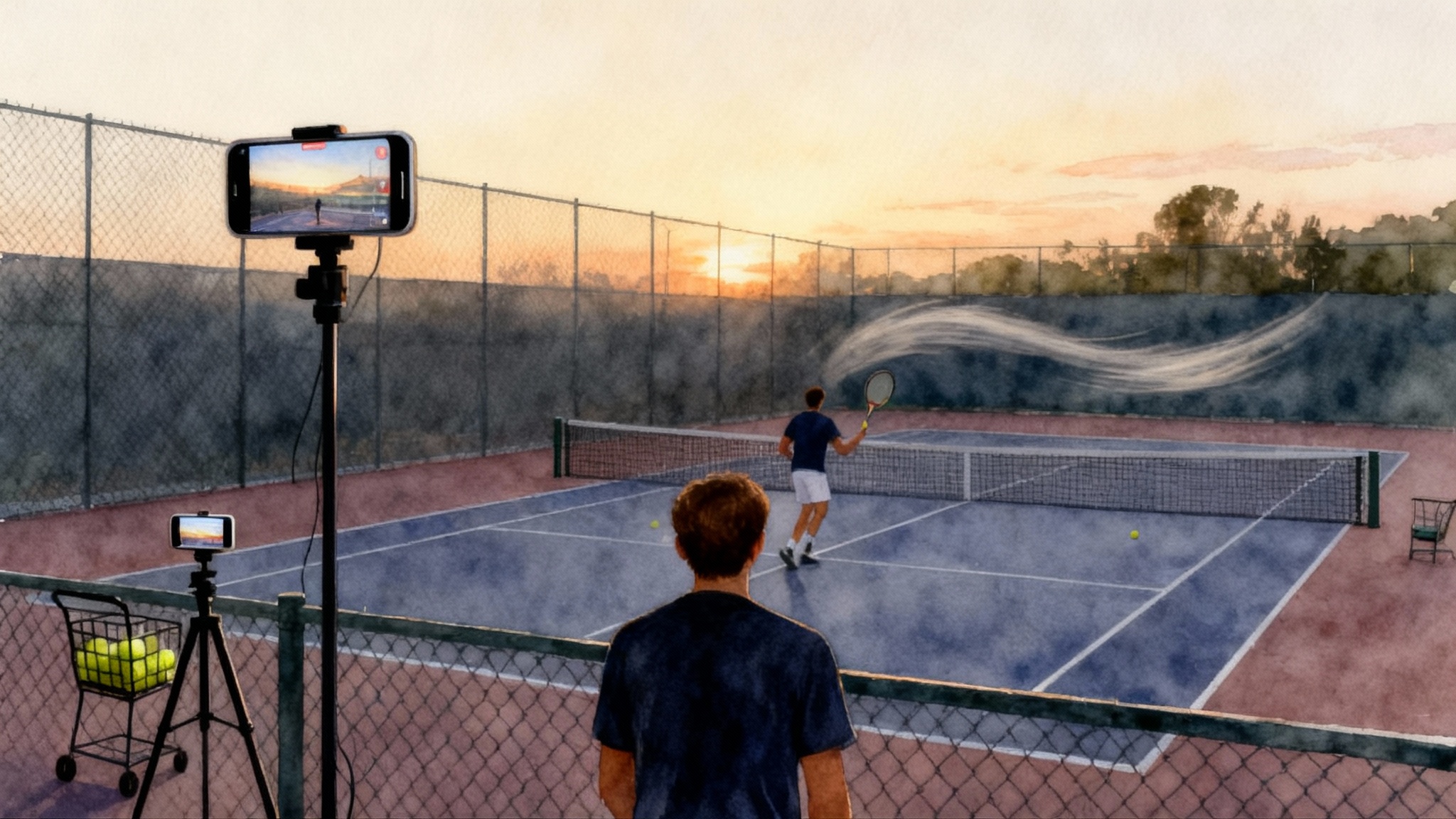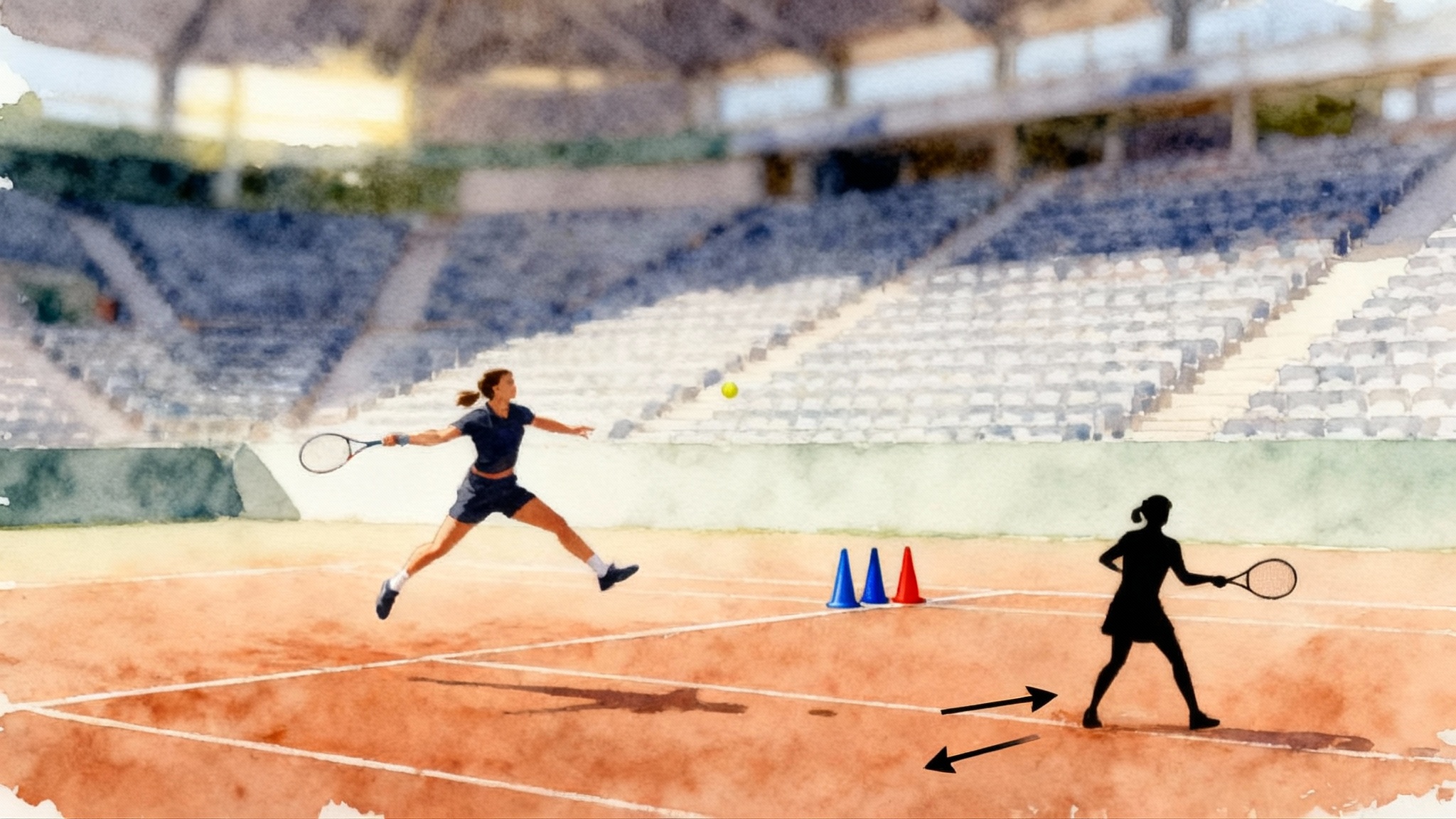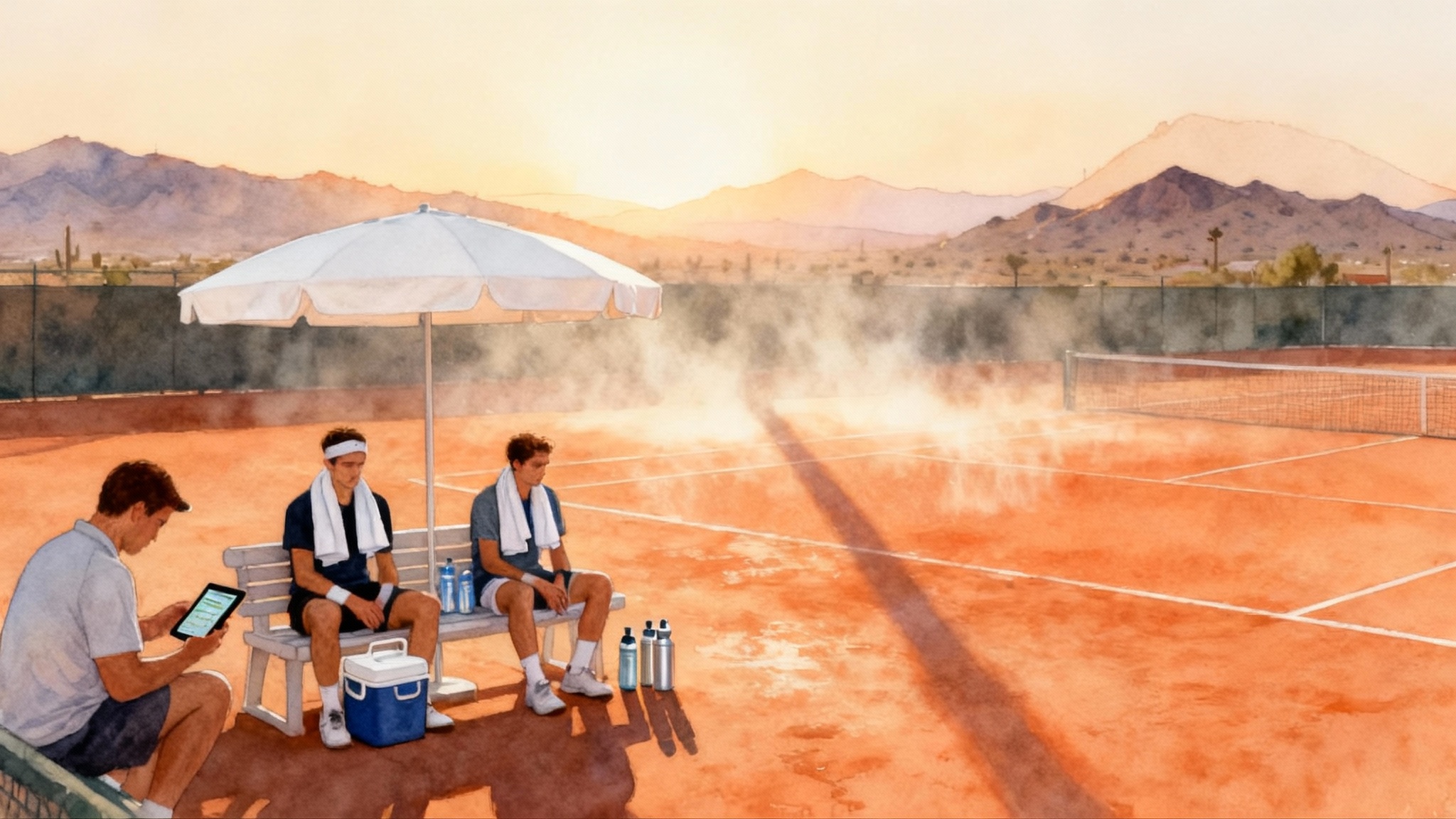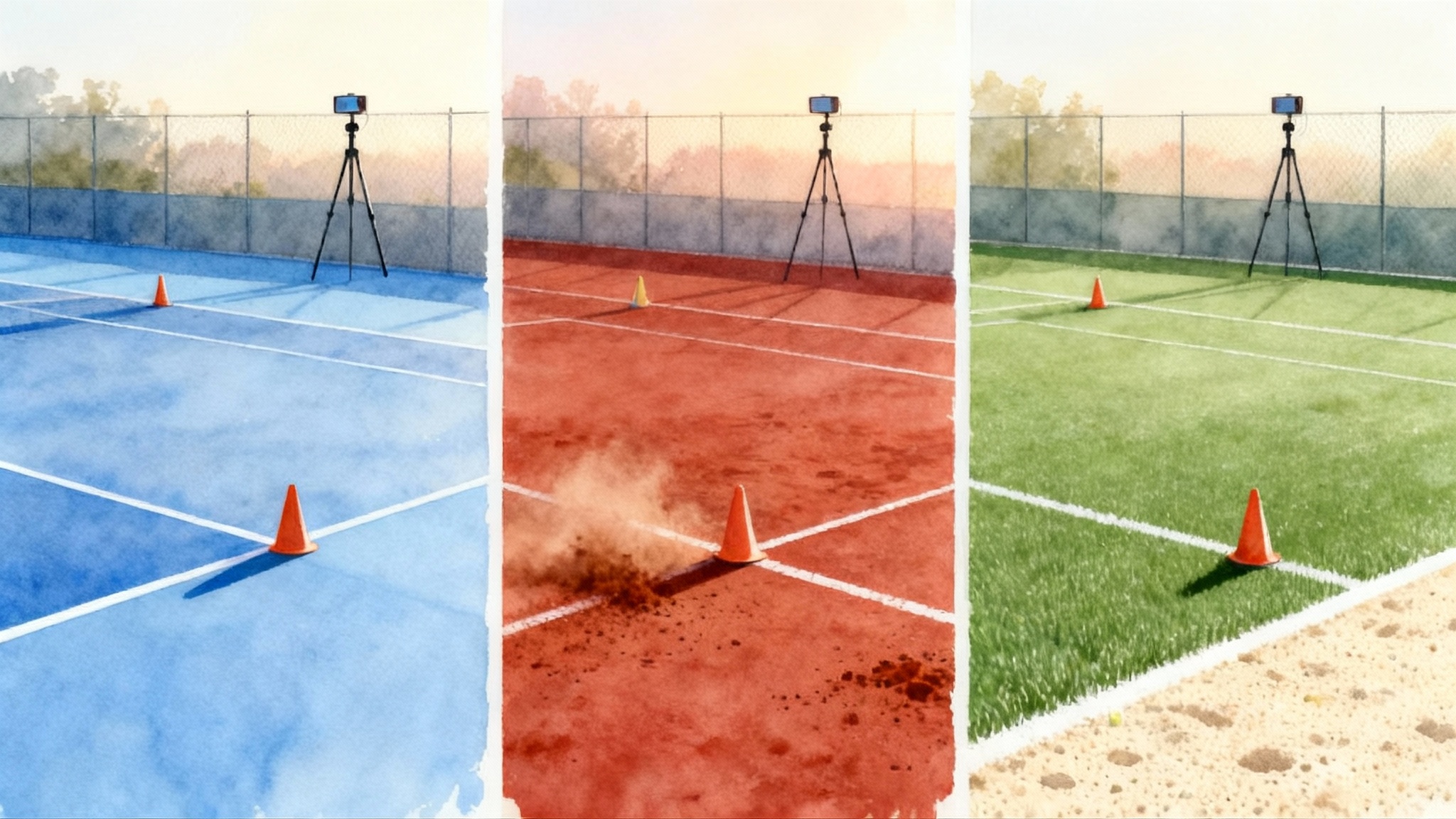UTR vs WTN vs NTRP in 2025: Plan Tournaments Without Burnout
A plain‑English guide to UTR, ITF World Tennis Number, and NTRP in 2025. Learn how juniors, parents, and adults can pick events, build 8–12 week training blocks, follow recovery rules, and improve steadily without overplaying.
The simple version: what UTR, WTN, and NTRP actually mean
Let’s strip out the jargon so you can plan with confidence.
- Universal Tennis Rating (UTR) is a global rating from roughly 1 to 16 that compares your level to everyone on the platform. Your rating rises when you perform better than expected against known opponents. UTR is used widely by college coaches and many open tournaments and match-play events.
- ITF World Tennis Number (WTN) is an international scale from 40 down to 1 where a lower number is stronger. It is run by the International Tennis Federation and used for seeding and acceptance at many national and international junior events. You can read the ITF World Tennis Number overview for the official description.
- National Tennis Rating Program (NTRP) is the United States recreational system from 1.0 to 7.0, used by the U.S. Tennis Association to organize adult leagues and many local tournaments. See the USTA explanation of NTRP if you play league tennis.
How they interact in real life:
- UTR and WTN are continuous ratings that update with each rated match. They focus on opponent strength and how competitive the score was.
- NTRP is categorical and season based. It governs the level you are eligible to enter in adult leagues and some tournaments.
- There is no universal conversion. The safest way to compare is to look at opponents you have in common and how your match scores line up. When in doubt, schedule two to three events that triangulate your level across systems, then recalibrate.
What actually moves your rating
Ratings do not rise from playing forever. They rise when you log competitive results against reliably rated opponents.
- Opponent quality: beating or pushing players whose rating is higher than yours moves the needle more.
- Scoreline matters: 6-4, 7-5 against a stronger player helps more than 6-0, 6-0 against a weaker one. In most systems, every game matters.
- Format and reliability: full match formats with many recent results carry more weight than fragmentary or stale data.
- Volume, to a point: a consistent trickle of competitive matches is better than bursts followed by long breaks. Think steady drip, not fire hose.
A practical rule: aim for matches where you will win about half the time against slightly stronger opponents and win two thirds of the time against peers. That mix strengthens your resume without wrestling the injury goblin.
Decision tree: which tournaments to play next
Use these trees to pick events that help your rating and your body.
For juniors (U12 to U18)
- What is the primary goal in the next 12 weeks?
- College visibility and a stronger UTR: prioritize UTR-rated opens, verified UTR match play, and strong sectional events where opponents have established UTRs.
- ITF or national ranking progress guided by WTN: choose events where draws seed by WTN and the field depth is known.
- Skill development while building a base: select local events with 2-3 matches guaranteed and manageable travel.
- Where does your rating sit relative to the draw?
- If your UTR or WTN is in the middle third of the expected field: green light. You should get multiple close matches.
- If you are among the top 15 percent: play only if you need confidence or a title. Otherwise you risk one lopsided path that teaches less.
- If you are among the bottom 25 percent: play only if you can secure a back draw or multiple guaranteed matches. Otherwise schedule strong sparring at home, then retry in 3-4 weeks.
- Travel filter
- Under 90 minutes one way: acceptable on school weeks.
- Over 90 minutes: require either two guaranteed matches or a 48-hour recovery window after returning.
- Decision
- Two local events with deep fields in the next 8-12 weeks beat one marquee trip with a single loss and drive home.
For aspiring college recruits
- Clarify target programs by band, not by logo
- Build a list of 12-20 programs that match your academics and style. Pull recent rosters and note typical lineup ratings. Aim for events that place you in front of those bands.
- Pick events that leave a trail coaches trust
- Verified UTR events, national stage sectional championships, and ITF events that appear on player profiles. Mix practice sets with match play only if those practice sets post as verified results.
- Decision
- If recent matches are mostly straight-set wins over lower-rated players, bump up one tier for the next event.
- If the last 6 weeks include four or more three-set losses to higher-rated players, book one event where you are seeded and expected to win rounds to balance the resume.
For a wider planning blueprint across the year, see our junior-to-college blueprint.
For adult players (NTRP league and tournaments)
- What do you want out of the next season?
- League success at current level: play the bulk of matches at your current NTRP, add one or two tournaments with a slightly tougher field to stretch.
- A bump up next year: schedule 30-40 percent of matches against players one half level higher and keep scores competitive.
- Doubles or singles emphasis
- If you care about singles rating progress, you need singles. Doubles improves skills but rarely replaces singles results for rating movement.
- Decision
- Avoid back-to-back tournament weekends if you also play league midweek. Choose either two tournament weekends in a month or one tournament plus league playoffs, not both.
Build 8-12 week blocks that raise ratings without burnout
Think of a block like a season inside your season: clear focus, a predictable weekly rhythm, and checkpoints. For weekly layouts you can copy, see our Smart Tennis Week templates.
Junior baseline block (8 weeks)
Goal: steady UTR and WTN growth while protecting school and growth spurts.
-
Weeks 1-2: skill and fitness emphasis
- On-court: 4 sessions focused on serve plus first ball, plus one session of point patterns. Total 7-8 hours.
- Fitness: 2 sessions of movement and injury prevention, 1 session of speed and acceleration. Total 2.5-3 hours.
- Competition: one verified match play day with two short matches or a compass draw event.
- Monitoring: rate soreness each night and morning; if you report 6 of 10 or higher for two straight days, cut the next session in half.
-
Weeks 3-4: competitive rehearsal
- On-court: 5 sessions, 60 percent live points, 40 percent drill. Total 8-9 hours.
- Fitness: add one stamina run or bike 25-35 minutes; keep injury prevention.
- Competition: one local tournament or two match-play days. Target three matches in week 4.
- Recovery: deload afternoon on the Monday after competition. No hard change-of-direction.
-
Week 5: consolidation
- On-court: 3 sessions of quality reps, two sessions of serves and returns. Total 6-7 hours.
- Competition: practice sets only. No travel.
-
Weeks 6-8: push and prove
- On-court: 5 sessions, high serve volume and first four shots.
- Competition: two events spaced by at least 7 days. Each event should offer two or more matches.
- Review: update your UTR and WTN comparisons and adjust your next block.
Junior performance block for college track (12 weeks)
Goal: add two to three competitive wins against higher-rated peers while keeping academics steady.
-
Weeks 1-3: base plus target scouting
- Film 20 minutes of serve plus plus-one patterns weekly. Note strengths and gaps.
- Schedule one event with strong field depth. Avoid red-eye travel.
-
Weeks 4-6: sharpen
- Two days weekly of practice sets with a running score goal, for example start 0-15 down every return game to force focus.
- One high-quality event in week 6 or 7 with opponents in your target college band.
-
Week 7: recovery and skills audit
- Two easy days. One pure technique day. One match play day if healthy.
-
Weeks 8-10: second peak
- Two events or one event plus a college coach exposure showcase. Keep schoolwork front loaded.
-
Weeks 11-12: taper and reflect
- Drop training volume 25-30 percent. Log wins and competitive losses with notes on patterns. Update your list of target programs and next block.
Adult NTRP improvement block (10 weeks)
Goal: earn a bump or solidify at the top of your level while staying healthy for work and family.
-
Weekly rhythm
- 2 on-court drilling sessions focused on serve, return, and crosscourt rally tolerance.
- 1 league or ladder match.
- 1 optional doubles night for touches and movement.
- 2 short strength sessions (30 minutes): hinges, squats, push, pull, calf work, and trunk rotation.
-
Competition plan
- Weeks 3-4: one local tournament with at least two matches guaranteed.
- Weeks 6-7: one stretch match against a half step higher opponent; focus on first serve percentage and unforced error cap.
- Weeks 9-10: one more tournament or league playoffs. No extra matches in those weeks.
Recovery rules you can actually follow
Write these into your calendar before you add tournaments.
- 48-hour rule after a tournament: no sprints or heavy change-of-direction for two days. Light hitting is fine.
- Match caps: 3 singles matches in 7 days for juniors during school weeks; 4 total matches if two are doubles. Adults with desk jobs cap at 2 singles plus 1 doubles in 7 days.
- Travel tax: if you fly, count the next day as recovery regardless of how you feel.
- Pain protocol: if a pain spike forces you to change your stroke, stop. If pain exceeds 5 of 10 for 24 hours after play, no competition for 72 hours.
- Sleep minimums: 8-9 hours for juniors, 7-8 for adults during competition weeks. Guard bedtime like a match point.
For movement quality that protects your knees during busier months, see faster stops and safer knees.
Decision tree: how to structure a competition month
- Do you have school exams or a major work project in the next 3 weeks?
- Yes: limit to one event with two guaranteed matches.
- No: plan two competitive weekends separated by at least 7 days.
- Did you log fewer than 12 rated matches in the last 6 months?
- Yes: prioritize events that guarantee multiple matches to stabilize your rating.
- No: choose one stretch event with a deeper field and one confidence event where you are likely seeded.
- Are you returning from injury in the last 8 weeks?
- Yes: schedule doubles first, then singles one week later.
- No: proceed to selection based on rating bands.
- Selection by band
- Juniors at or near the top of sectional level: one national-level event and one strong local event per month.
- Juniors in the middle of sectional level: two strong local events or one local plus one regional travel event with back draw.
- Adults at the top of their NTRP: one tournament plus league matches. Consider an open draw only if you can handle reduced recovery.
- Adults in the middle of their NTRP: two league matches weekly or one league match plus a local tournament every other month.
College recruiting checkpoints for juniors
- Freshman and early sophomore year: build volume of verified results and a reliable rating. Play opponents slightly above and at your level. Film points monthly so you can share recent footage.
- After sophomore year into junior year: deepen your schedule with events that coaches track. Mix in showcases if they create matches against target bands. Maintain grades and test plans.
- Junior year spring to summer: aim for repeated close matches against players who already compete at your target program level. Keep your competition calendar balanced so you arrive healthy to summer events.
- Senior year: finalize programs that fit and focus on performing where those coaches watch. Keep training honest and simple. Avoid wholesale technical changes in the last 12 weeks.
Pro tip: instead of chasing a single rating number, compare yourself to the recent lineup bands of your target teams. If your results are competitive with those bands, your resume will speak clearly.
Adult league planning made practical
- Build around your league night. Treat it as your weekly match anchor.
- Add one drilling session focused on serve plus first ball and one session for returns and crosscourt consistency.
- Enter tournaments that give two or more matches so one bad day does not define the month.
- If you are pushing for a bump, collect a handful of competitive results against players a half level up. Keep doubles in rotation for movement, reflexes, and net skills, but do not replace your singles work if singles is your goal.
- Guard recovery windows during playoffs. Most adult injuries show up when competitive volume spikes and sleep drops.
A sample week you can copy
- Monday: 60 minutes strength and mobility, 30 minutes serves and returns.
- Tuesday: practice sets 1.5 hours, finish with 15 minutes of pattern play.
- Wednesday: recovery bike 25 minutes, mobility 15 minutes.
- Thursday: drilling 75 minutes, serve targets and crosscourt rally tolerance.
- Friday: off or light hit 45 minutes.
- Saturday: tournament or league match. Warm up 25 minutes with short sprints and overhead rhythm.
- Sunday: off or light walk. If in a tournament, keep the warm up short and familiar.
How a quick rating audit works
If you want help, our coaches can run a simple rating audit that takes less than a week.
- We gather your recent match scores and the ratings of your opponents.
- We map your UTR, WTN, and any NTRP results into one picture and identify your most efficient rating band for the next 8-12 weeks.
- You receive a custom competition calendar with event types, ideal dates, and a training template, plus red-flag reminders for recovery.
The bottom line
Match the event to your goal, not your calendar. Pick fields that produce close contests against well rated opponents. Train in predictable 8-12 week blocks with recovery set in stone. Measure progress by how competitive you are against the bands you care about, and let the rating follow. Smart scheduling beats volume, and healthy bodies win more matches over the long run.
